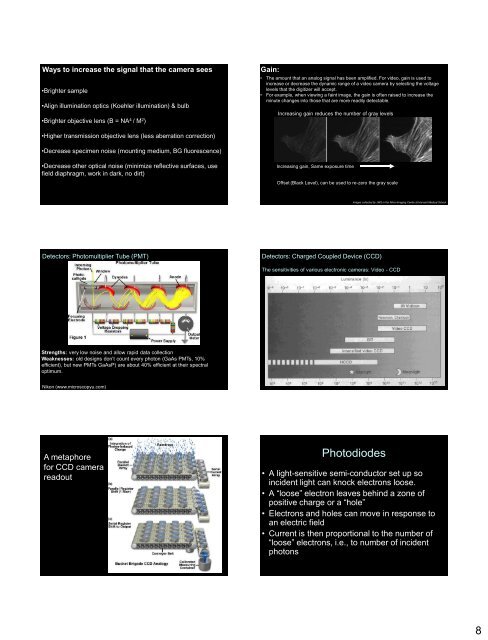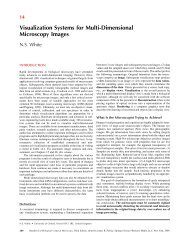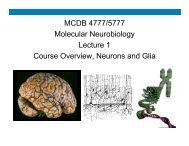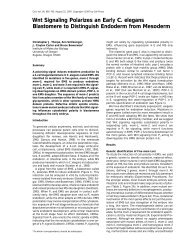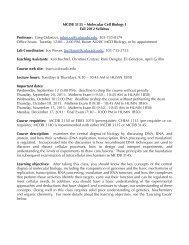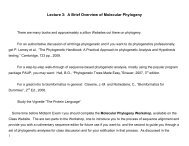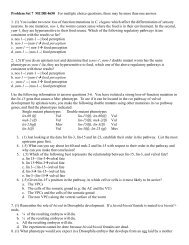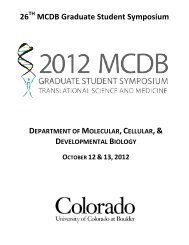Fluorescence and Confocal Microscopy
Fluorescence and Confocal Microscopy
Fluorescence and Confocal Microscopy
Create successful ePaper yourself
Turn your PDF publications into a flip-book with our unique Google optimized e-Paper software.
Ways to increase the signal that the camera sees<br />
•Brighter sample<br />
•Align illumination optics (Koehler illumination) & bulb<br />
•Brighter objective lens (B = NA 4 / M 2 )<br />
•Higher transmission objective lens (less aberration correction)<br />
•Decrease specimen noise (mounting medium, BG fluorescence)<br />
•Decrease other optical noise (minimize reflective surfaces, use<br />
field diaphragm, work in dark, no dirt)<br />
Detectors: Photomultiplier Tube (PMT)<br />
Strengths: very low noise <strong>and</strong> allow rapid data collection<br />
Weaknesses: old designs don’t count every photon (GaAs PMTs, 10%<br />
efficient), but new PMTs GaAsP) are about 40% efficient at their spectral<br />
optimum.<br />
Nikon (www.microscopyu.com)<br />
A metaphore<br />
for CCD camera<br />
readout<br />
Gain:<br />
• The amount that an analog signal has been amplified. For video, gain is used to<br />
increase or decrease the dynamic range of a video camera by selecting the voltage<br />
levels that the digitizer will accept.<br />
• For example, when viewing a faint image, the gain is often raised to increase the<br />
minute changes into those that are more readily detectable.<br />
Increasing gain reduces the number of gray levels<br />
Increasing gain, Same exposure time<br />
Offset (Black Level), can be used to re-zero the gray scale<br />
Detectors: Charged Coupled Device (CCD)<br />
Images collected by JWS in the Nikon Imaging Center at Harvard Medical School<br />
The sensitivities of various electronic cameras: Video - CCD<br />
Photodiodes<br />
• A light-sensitive semi-conductor set up so<br />
incident light can knock electrons loose.<br />
• A “loose” electron leaves behind a zone of<br />
positive charge or a “hole”<br />
• Electrons <strong>and</strong> holes can move in response to<br />
an electric field<br />
• Current is then proportional to the number of<br />
“loose” electrons, i.e., to number of incident<br />
photons<br />
8


